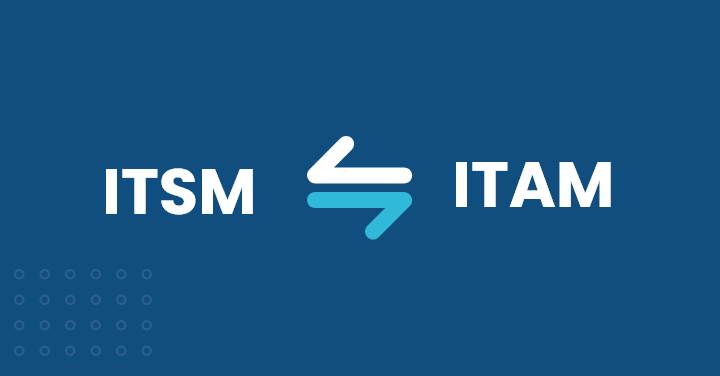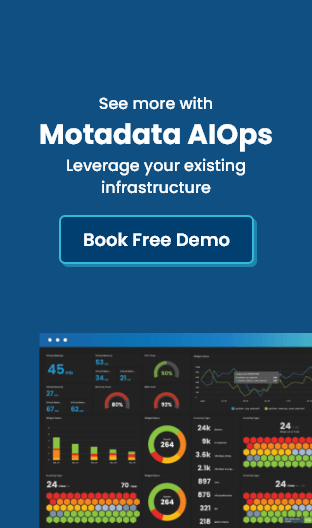Introduction
IT downtime remains one of the worst headaches for any company to endure. A teeny-teeny outage costs money, disrupts service schedules, and gets customers very grumpy.
Most IT groups still play the old playbook: they sit and wait and respond only after a system crashes. That’s a whole lot of lag in repairing things when time is running out.
Here’s how predictive analytics turns it up a notch. Rather than allowing the crisis to arrive, IT professionals can identify warning signs in advance. They mix up stale performance data, real-time readings, and smart algorithms to issue alerts days or even weeks before a crash.
When they couple that with good enterprise data service and enterprise big data solutions, they make the transition.
What Predictive Analytics Looks Like in ITSM?
Predictive analytics in ITSM looks at all the historical data along with live monitoring and intelligent math models to make predictions about when a server may crash or a service will slow down. Rather than waiting for the outage and then mending, IT teams learn to recognize the outage before it comes and tame it.
Machine learning and AI get the heavy work done for everyone, computing numbers a gazillion times faster and smarter than one ever could write down in a notebook.
Plugging it all into enterprise data services makes predictive analytics not a guess, but the heartbeat that keeps our IT systems stable and our customers smiling.
The key elements of the enterprise decision analytics are gathering data, modeling data, real-time monitoring, and trend detection. A person starts out by grabbing logs, performance metrics, and stale incident tickets.
Data modeling research that caches data to determine the patterns that alert to the upcoming outage. Real-time monitoring is listening for something unusual occurring now.
The Role of Enterprise Data Services in Reducing Downtime
Enterprise data services are pretty much lifesavers when it comes to cutting downtime in IT service management. They spot strange patterns really early, so IT folks have a head start to fix stuff before it blows up. Plus, they keep an eye on systems 24/7, always on the lookout for even the tiniest sign that something’s off.
The systems also guess the real reason a problem keeps happening, saving the team from endless guesswork. In addition to this, services determine which incidents are the most important. Issues that would affect the largest number of users are brought to the forefront, preventing a small glitch from becoming a large mess.
The software also foretells when aspects of the system will fail, so all can be especially cautious when that time comes. The best part? These smart services plug right into the IT service management tools companies are already using, so teams get the crystal-ball features without having to learn a brand-new system.
Leveraging Enterprise Data Solutions for ITSM Success
Getting predictive analytics to work in IT service management (ITSM) really comes down to having solid enterprise data solutions in place. These tools let your IT systems link up easily with service management platforms like ServiceNow or Jira, meaning work steps flow without a hitch.
Instead of flooding you with raw numbers, they spit out reports with clear, actionable ideas, so IT managers can decide what to do fast. With the help of enterprise data services, organizations gain the ability to predict problems before they escalate.
One standout feature is the ability to spot repeating issue patterns. By revealing what keeps cropping up across servers or networks, teams can fix the root cause once and for all.
These solutions also help systems run at their best, boosting performance and cutting the number of failures. Most critical of all, they put solid evidence at the center of every IT choice, so decisions are based on current facts, not gut feelings.
And since they grow every time the business does, they fit startups and huge corporations alike without extra headaches.
Benefits of Enterprise Data Solutions in ITSM
When IT Service Management (ITSM) uses data from the whole company, it gets real and easy wins for business. IT crews get to be smarter, avoid crashes, and serve users way better. That way, they’re one step ahead of trouble instead of always chasing it down. Here’s what stands out the most:
1. Speedy Problem Fixing: Techs spot the real problem fast and fix it before it grows into a major outage.
2. Smart Upkeep: Devices are patched, tuned, and stream-cleaned before something breaks, so downtime drops and everything keeps humming.
3. Smarter Use of People: IT staff and tools go exactly where they’re most useful, so a costly backup resource never sits unused.
Implementing Enterprise Data Services in ITSM
Running predictive analytics well starts with knowing exactly how to set up enterprise data services. First, you take stock of your current setup to see which tools and systems are ready to go.
After that, you pick the solutions that fit your IT service management (ITSM) targets the best. Then, you ensure that the new tools connect seamlessly with your existing ITSM software, allowing analytics to run smoothly.
Another big job is deciding on your key performance indicators (KPIs) and metrics, which show whether things like system uptime, mean time to repair (MTTR), and service-level agreement (SLA) targets are getting better.
The project can’t work in a vacuum, so IT folks team up with other departments to make sure everything rolls out without a hitch. Finally, you track the predictive models all the time and tune them as things change, so they stay accurate for the long haul.
Enhancing ITSM with Data Enterprise Solutions
Enterprise data solutions take ITSM up a notch by adding tools that pump up predictive analytics. They give you the ability to spot incidents in real time, so you catch issues the moment they show signs.
You also get predictive insights that help the IT team see exactly when and where a system is most likely to fail. Automated alerts and reactions mean less manual work for the team, speeding up how quickly you can bounce back.
Continuous monitoring and optimization keep the predictive models up to date, ensuring long-term accuracy and success.
Integrated dashboards really stand out as a cool perk of data enterprise solutions. They give IT managers a one-stop view of how everything’s running, so they can spot problem areas and tweak performance at a glance.
Since the dashboards pull data from a bunch of systems, they really push the idea of making decisions based on solid facts, not gut feelings. Data enterprise solutions mean a company can get the specific details it needs, making ITSM day-to-day work a lot smoother and smarter.
Best Practices for Reducing Downtime with Predictive Analytics
To really nail predictive analytics in ITSM, businesses should keep these best practices in mind. First up, keep data clean. Junky data leads to junky forecasts. It’s also smart to kick things off with a small pilot project before rolling it out to everyone.
The IT world changes fast, so keep predictive models refreshed often. Another easy win is to choose enterprise data solutions that plug right into the ITSM tools you already have.
Enough with the “learning a whole new system” headaches. Train the team to build that trust and skill with predictive analytics. Never forget to keep data secure and compliant since you’re working with sensitive info.
Finally, measure key performance indicators regularly so you can see what’s improving. That keeps the whole company in a “let data talk” mindset rather than a “let’s wing it” one.
Ready to Transform Your ITSM with Predictive Insights? Let’s Talk
Predictive analytics isn’t just another gadget for IT teams; it’s how the whole business decides to run IT for the future. Blend old performance stats, live updates, and clever models, and the numbers show you can cut freezes and failures way down.
The payoff isn’t guesswork anymore: fewer after-hours fires, servers that just keep running, happy users, and IT teams that can schedule work rather than play catch-up.
Start using enterprise data services, enterprise-data-solutions, and enterprise big data solutions, and IT Service Management can switch from fixing problems to stopping them before anyone notices.
Throw in enterprise decision analytics, and IT plans fit the bigger picture, so the whole company stays a step ahead of the competition.
If you’re ready to stop reacting and start predicting, it’s time to explore advanced data solutions that put you ahead of IT challenges.
FAqs:
Predictive analytics in ITSM takes old and live data to guess when something in the system might break. By using data services from the company, IT teams can spot trouble before it causes a real headache.
These solutions work with ITSM tools to keep a constant eye on system health, send alerts before the issue gets serious, and speed up the fix when something does go wrong. The end result is shorter downtime.
Big data tools handle tons of data, identify patterns most people can’t see, and predict when something might fail. By doing this, they help keep IT services running smoothly.
Definitely! These solutions can plug right into tools like ServiceNow and Jira, allowing teams to get the benefits without a long, painful rollout.
Enterprise decision analytics ensures that IT choices stick to what the business needs. It fine-tunes how resources are spent, smooths out workflows, and keeps service level agreements (SLAs) on track.
Nope, it’s not just the big players. Smaller firms can get in on the action, too. With data tools that fit any size, smaller businesses can use predictive analytics to minimize downtime and boost the entire IT setup.
Kick things off by giving your current IT environment a solid once-over. Next, pick data tools that fit into your setup, plug them into your IT service management platform, and get your crew up to speed on reading the results.







